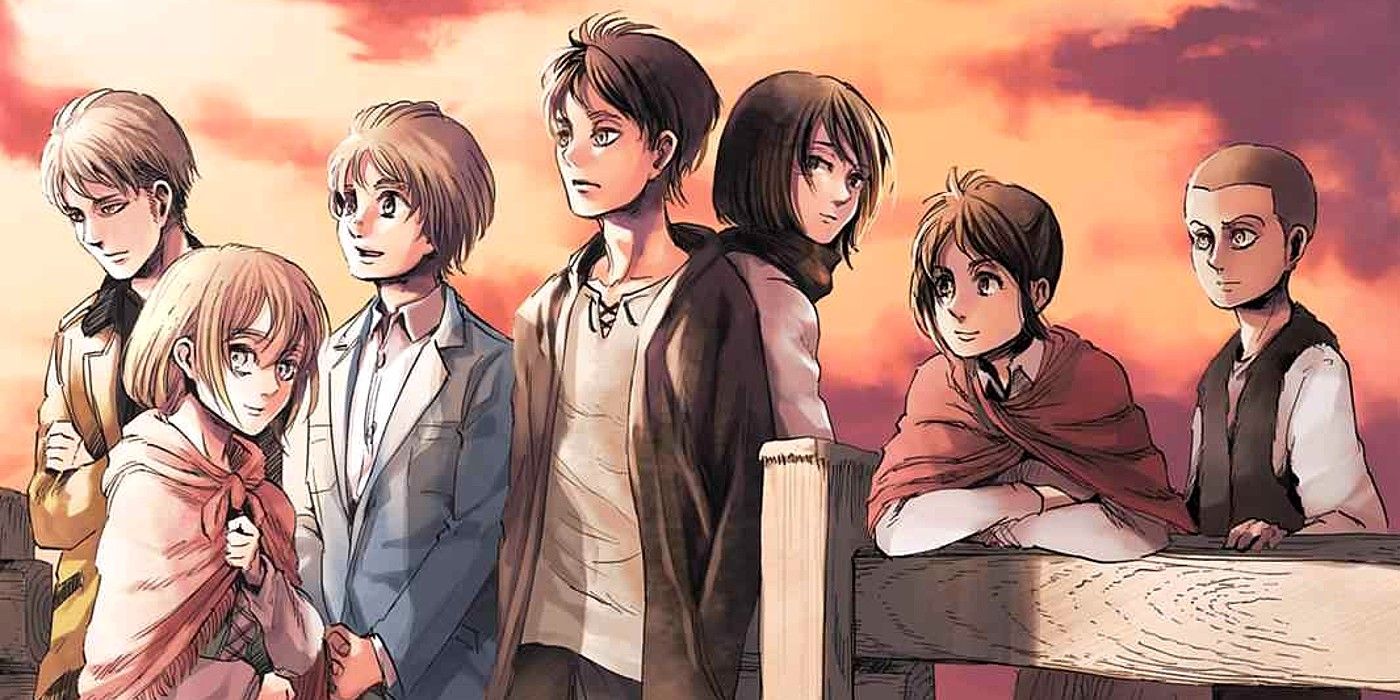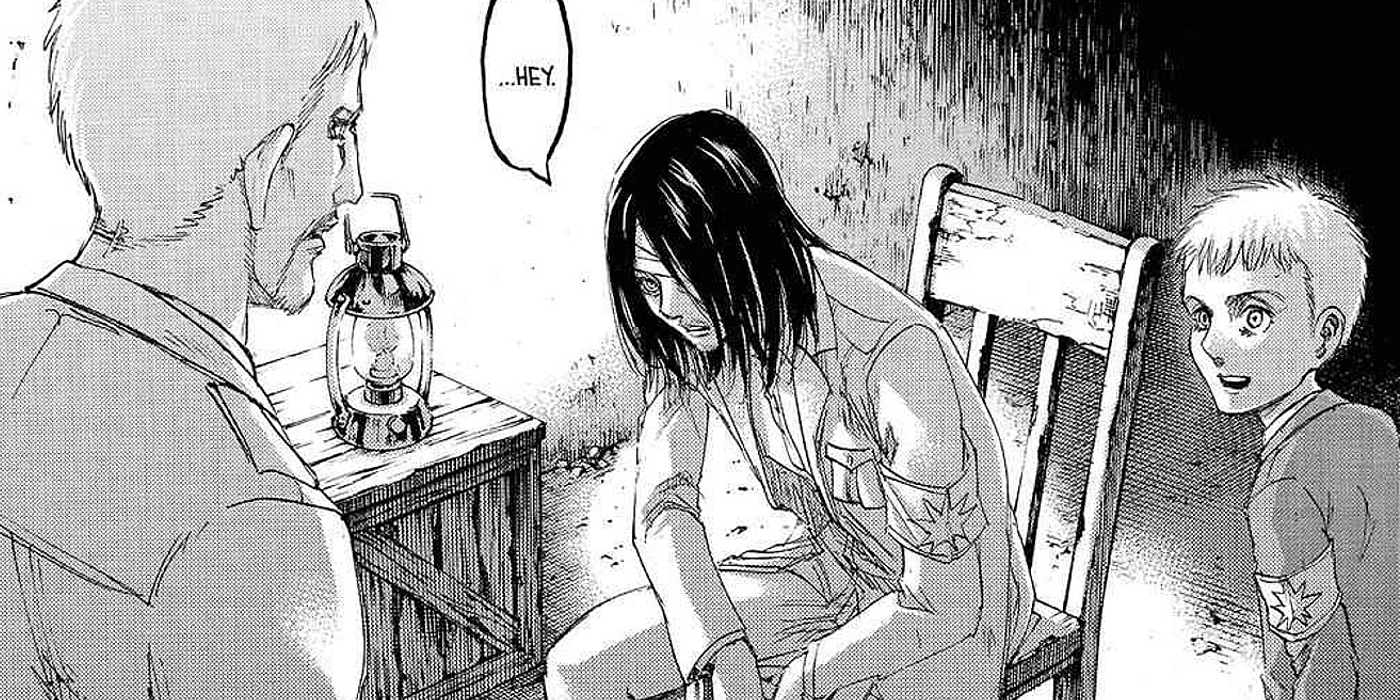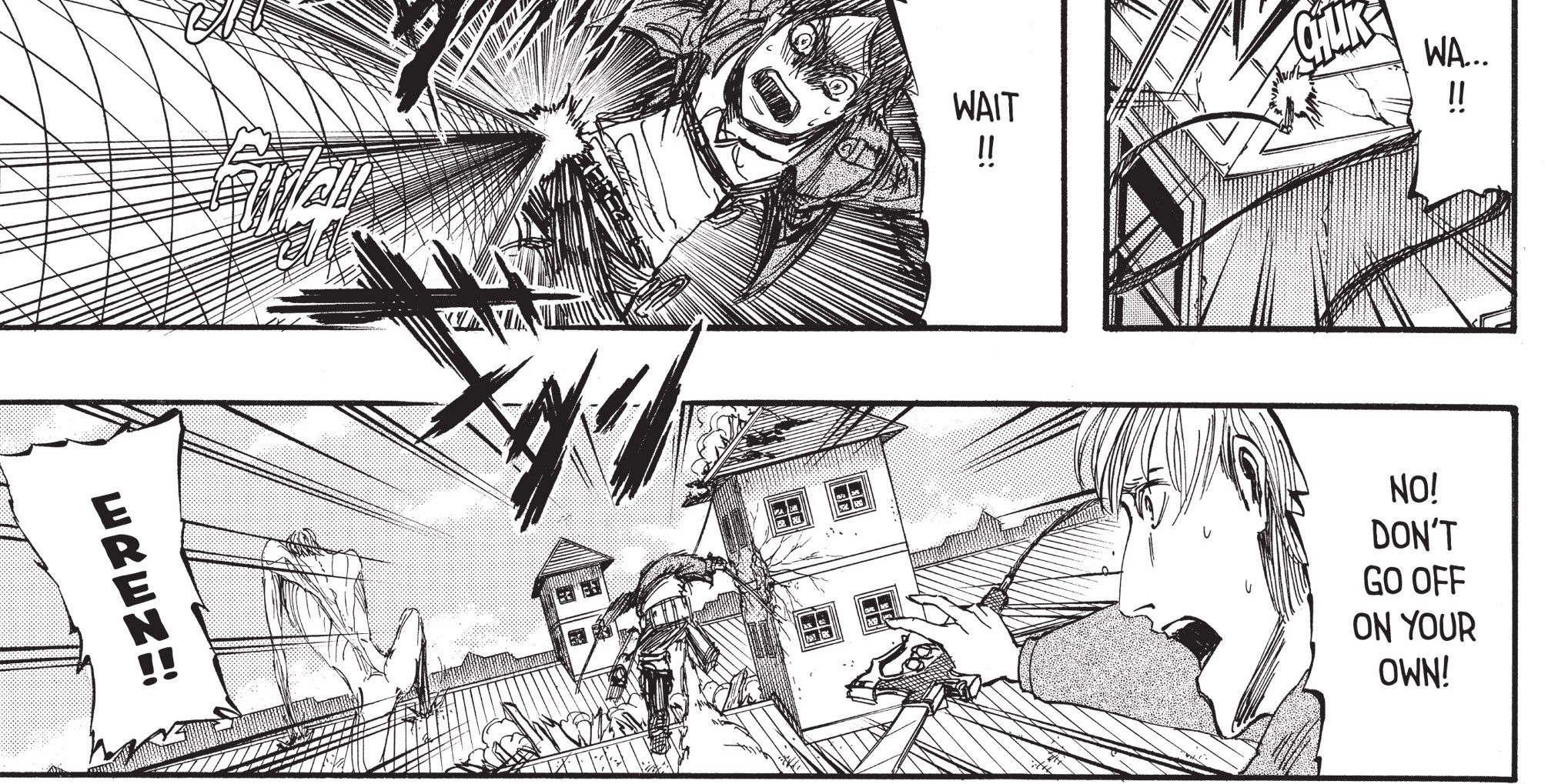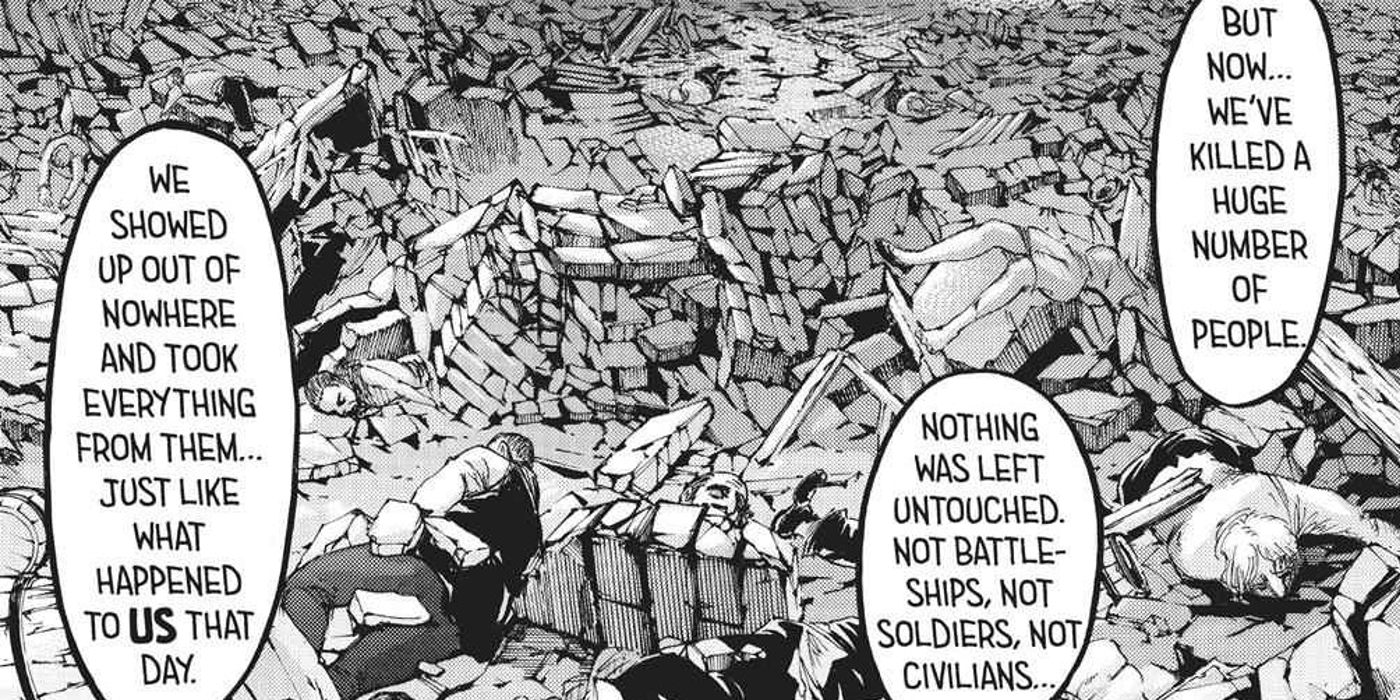Warning: spoilers for Attack on Titan!
A good twist can be hard to come by, but Attack on Titan may have devised the perfect mind-blower in its most hotly debated narrative event: Eren Yeager’s heel-turn to despicable villainy. Though Hijame Isayama’s giant-slaying epic may be over, the long-running series has left an indelible mark on the discipline of manga story-crafting, particularly through the interwoven mass of plot twists that wind their way through the story. And yet, even with so many twists, the biggest one happened to be the best.
Beginning as the ostensible hero in a world beset by the cannibalistic Titans, Eren struggles to find his way in overcoming this bestial threat to humanity, eventually discovering his own place in a much grander conflict involving ancient magic and warring nations. Throughout Isayama's carefully threaded sequence of increasingly visceral revelations, the mangaka makes sure to keep the thematic resonance and character psychology of Eren as cohesive as possible, eventually finding him unexpectedly and quite permanently turning to evil after committing a surprise terrorist attack on the enemy nation of Marley. This act of brutal genocide, taking the lives of countless civilians including women and children, is only the first in an increasingly callous series of events which concludes with Eren’s decimation of the human race using mythical Titan powers. Though this twist denies the audience the expected heroic victory, this plot point is a testament to Isayama’s skill, both in how meticulously it is set up and how well it pays off in the end.
Attack on Titan's Twists Shouldn't Have Worked
What makes Eren's heel-turn so impressive as a twist is that the narrative isn't necessarily one that lends itself to surprising reveals. Throughout Attack on Titan, Isayama endeavors to build a cohesive, holistic argument which needs to appear consistent in hindsight, even if all its nuances aren't apparent until the end. Because of this, having a narrative full of twists is not a simple task, especially for a lengthy story with a clear end-point in mind. No matter how wild the tale may have grown, it was always important for Isayama to take the weight of each successive plot twist into account, or the story would have begun to feel disconnected and unwieldy.
Isayama takes this roller-coaster ride to the next level in the lead-up to Eren’s villain-switch, completely eschewing Eren’s comrades in the Survey Corps as the usual protagonists in favor of a scrappy band of Marleyan Warriors, led by antagonists Zeke “Beast Titan” Yeager and Reiner “Armored Titan” Braun following a five-year time skip. In an arc already chock-full of staggering twists, including a remarkably poignant and nuanced discussion of Reiner’s own inferiority complex and indoctrination as a weapon against his Eldian kinsmen, Eren appears disguised as a disfigured refugee. Barely recognizable, Eren befriends one of Reiner’s young comrades, Falco, and uses him to send messages to his friends on Paradis Island.
The arc culminates with the fruition of Eren’s plan in Chapter 98, in which he manipulates Falco into luring Reiner into a trap, hoping to incapacitate him before his planned attack on Marley. During this confrontation, Reiner admits his guilt to Eren, and expresses remorse for his role in destroying the outer wall, an event which led to Eren’s mother’s death, saying he did so because he wanted to be a hero. Eren, in seemingly heartfelt fashion, tells his enemy that he understands that - while Reiner and all of the people in Marley are his enemies - they are in many ways the same. He even offers him a handshake, which Reiner accepts. However, this turns out to be a cruel ploy, as once Marleyan oligarch Willy Tybur completes his declaration of war against Paradis Island from the stage above where Eren and Reiner are, Eren transforms into his Titan form and begins a mass slaughter of everyone at the event.
Eren's Fall Was Foreshadowed from the Beginning
While some fans have accused Isayama of grossly mishandling the character in his final twist, turning Eren on a dime from the avenging protagonist into a heartless villain, real consideration of the earlier chapters of Eren’s adventures provide ample evidence that this kind of behavior was always in his wheelhouse. Despite his tragic beginnings as a refugee from Titan-infested territory, Eren always derives his motivation from a sense of self-importance and entitlement, famously exclaiming “I was born into this world,” as his driving axiom. This messiah complex may have been born out of necessity more than nature, as he shoulders responsibility for his lost home and devoured mother from an early age and needs some psychological edge just to keep moving forward. Ironically, it is this psychological impetus that precipitates Eren’s eventual acts of genocide at the end of the series.
While Eren’s dark odyssey appears to have begun with honorable intentions, readers can find Isayama clearly pointing to this same self-importance as the source of Eren’s problems as early as Chapter 4, when Eren displays a reckless disregard for convention during his first active mission out of training. Charging ahead after witnessing a Titan eat cadet Thomas Wagner despite the pleas of his squad mates, his predictable near-fatal wounding leads to the deaths of four fellow cadets who attempt to rescue him. The event ends with his own ingestion by a Titan, from which he is only saved by his own secret Titan power.
Attack on Titan's Final Twist Had to Happen
While it may seem a minor character note, Eren’s lack of self-discipline in his early mission ultimately serves as one of many foreshadowing instances that lead to his cataclysmic and monstrous turn to villainy and terrorism. Isayama even takes pains to portray this as an immediate demonstration of Eren’s hypocrisy, with the supposed hero having only moments earlier cautioned Mikasa against defying commands from her superiors, something Eren himself struggles with time and again. Isayama did not put in these small moments without reason; he did so because he was laying the foundations for the series' grand twist. This twist - being that Eren would devolve into a nearly unrecognizable, sociopathic murderer - ultimately fulfills the thematic promise of Eren's foundational flaws.
Isayama’s depiction of Eren’s shocking subterfuge and subsequent massacre highlights an interesting point about storybook heroes, that being that it shows how little an audience can really know the protagonist of a given work, even as they spend years rooting for them. The characters of a good, nuanced writer can always surprise the reader and, divisive though it may have been, Eren’s transformation into the epitome of the very monsters he set out to destroy is an incredible and bold twist on Isayama’s part, demonstrating the complex moral underpinnings of Attack on Titan.




